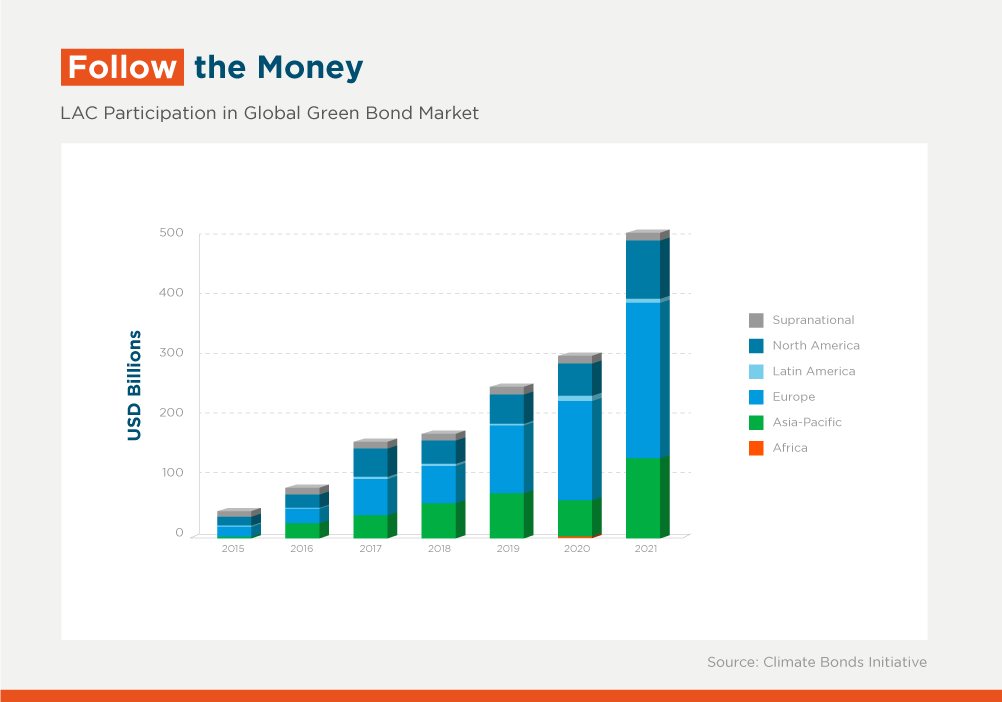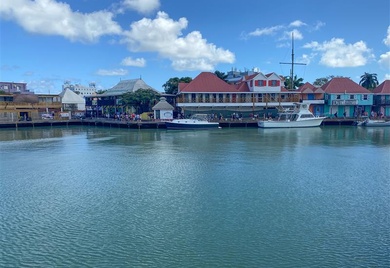Increasing Green Finance Calls for More and Better Impact Reporting

Latin America and the Caribbean (LAC) is home to some of the countries most affected by climate change: out of the 20 countries with the highest climate-related losses as a percentage of GDP, 9 are from LAC.
Globally, the volume of financing required to help mitigate and adapt to the effects of climate change is immense: in order to reach internationally agreed climate objectives by 2030, annual climate finance must increase by an estimated 590%. However, as it stands, only 49% of Latin American banks offer green products and services, well below the 95% average for international banks.
Addressing this challenge calls for financial institutions (FIs) to step up their role in channeling capital flows towards green investments, including the green transition. The business case for operating in this space is clear, from creating new business opportunities and reducing exposure to climate change and climate transition risks, to strengthening reputation and branding.
Measure the impact of green portfolios for a competitive edge
Beyond financing green projects, FIs that go a step further to credibly measure the impact of their green portfolios—such as greenhouse gas emission avoidance, water and energy savings, and progress towards science-based targets—can gain a competitive advantage.
For example, rigorously measuring the impact of green lending activities can demonstrate how the FI is contributing to key global initiatives such as the Paris Agreement on Climate Change and serve as a first step towards more ambitious goals, such as achieving Net Zero Status. It can also help attract an ever-increasing base of global investors looking for reliable, comparable data on sustainable investment opportunities.
Green or sustainable bonds, which provide dedicated funding to environmentally friendly projects, are one of the most transparent sustainable investments. This is due to their strict use-of-proceeds structure and transparent reporting practices, which should follow the International Capital Market Association (ICMA) standards. Likewise, the IDB’s Green Bond Transparency Platform aims to encourage transparency in the green bond market in LAC through information sharing on the use of proceeds and environmental performance of specific bonds.

On the global stage, several recent initiatives by regulators and other organizations aim to standardize impact measurement for green investments. For example, the Organization for Economic Co-operation and Development and United Nations Development Program recently published the Impact Standards for Financing Sustainable Development.
The Partnership for Carbon Accounting Financials developed a Global GHG Accounting and Reporting Standard for the Financial Industry, and the International Organization for Standardization, through their ISO 14020 standard, provides a globally recognized set of international benchmarks against which companies can prepare their environmental labelling. Likewise, IDB Invest is supporting various country-level initiatives to promote international best practices and policies on green lending in countries such as Paraguay, El Salvador, and Guatemala.
However, green finance impact reporting is not yet common in LAC, often because FIs lack the capacity to do so. This includes proper portfolio segmentation of green projects, appropriate tools to systematize information, and the technical capacity to calculate the benefits of such projects.
That is why providing support to increase the impact reporting capacity of FIs in the region is essential to build a culture of accountability and further promote green investments.
Building impact reporting capacity among FIs
IDB Invest is partnering with a range of FIs to create tailor-made plans to improve their capacity to better serve the green segment, measure the impact of these activities, and capitalize on opportunities in primary and secondary markets.
For example, IDB Invest provided advisory services to banks in Costa Rica and El Salvador to prepare for the first issuance of sustainable bonds in both countries. Sometimes IDB Invest support evolves over time along with the client. For instance, with a credit cooperative in Brazil, IDB Invest first helped the client develop a sustainability strategy and capabilities to monitor the impacts of its green portfolio. In a subsequent transaction, IDB Invest helped the client develop a Green Bond Framework, which was validated through a second party opinion, and purchased the entire issuance. Since then, the client has issued sustainable financial notes in the market, which include green and social categories.
Other FIs aim to reach Net Zero Status and need help getting there. IDB Invest is working with a bank in Ecuador to develop a strategic plan, including identifying the workforce capabilities, technologies, new products and services, and financing necessary to achieve this ambitious goal, as well as how to measure progress towards decarbonization.
Climate change represents one of the greatest challenges of our generation. FIs have the potential to direct capital flows towards green investments in a meaningful way, and they have a strong business case to do so. Making this happen is as much about enhancing the green lending and impact measurement capacities of FIs as supporting them financially.
LIKE WHAT YOU JUST READ?
Subscribe to our mailing list to stay informed on the latest IDB Invest news, blog posts, upcoming events, and to learn more about specific areas of interest.
Subscribe



